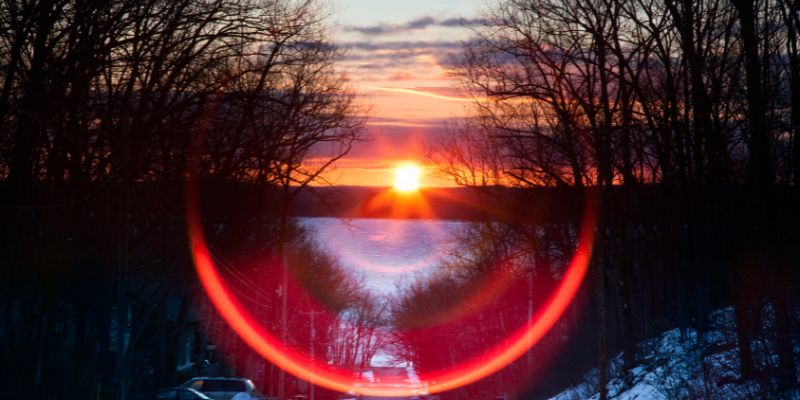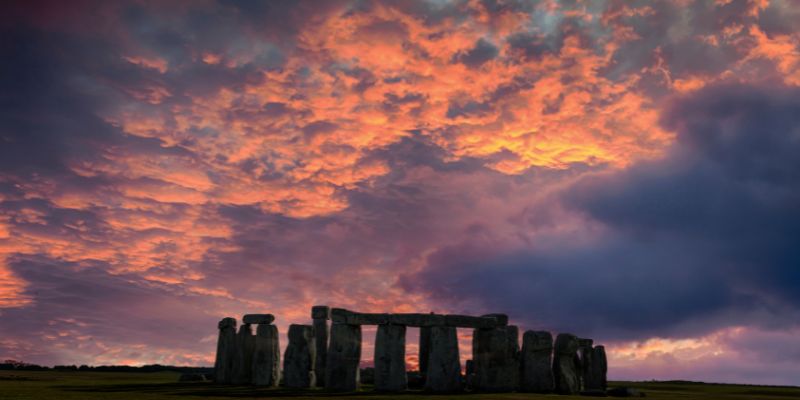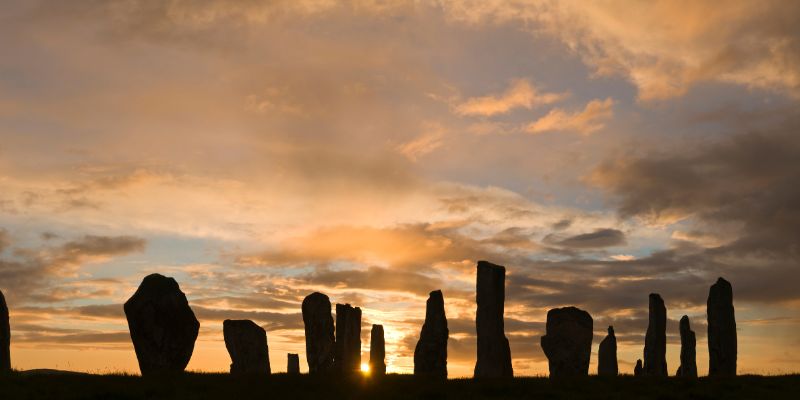Understanding the Equinox and Solstice – What’s The Difference?
Written by Nayantara Singh
Equinox is a time of the year when the day and night are of equal duration. A solstice is the exact opposite. They both take place twice a year.
Written by Nayantara Singh
The September Equinox has arrived, marking the start of the fall season for the Northern Hemisphere. Do you know what is the equinox is? We explain it here, and also the difference between an equinox and a solstice.
Read on for facts about the equinox and facts about solstice.
First, what’s an equinox?
Equinox: A Balance of Light and Darkness

What is an Equinox?

Equinox is a time of the year when the day and night are of equal duration – meaning the same length of time.
Equinoxes take place twice a year – in September and in March.
Why and how do Equinoxes happen?
So what we need to know quickly (and you probably know this) is that when the Earth goes around the sun, it does so at a certain axis (it’s tilted- meaning it’s not straight, but kind of bent towards in side)
In September and March – two times in a year – the Earth’s axis is tilted neither toward nor away from the sun, which is directly above the equator at this time.
Because of this there is almost an equal amount of daylight and darkness in both the northern and southern hemispheres. These events are called Equinoxes.
When do equinoxes take place? They happen on March 21st (called the vernal equinox) and on September 23rd (called the autumnal equinox).
What does Equinox mean?
The word “equinox” comes from the Latin words “aequus” and “nox,” meaning “equal night.”
How do Equinoxes work?
The Earth’s axis, as we told you above, is tilted as it goes around the Sun. This tilt is what causes the changes in seasons as different parts of the planet receive different amounts of sunlight through the year.
During the equinoxes, however, the axis is positioned in such a way that the Sun shines directly over the equator. This causes the Sun to rise due east and set due west everywhere on Earth.
Cultural Significance
Throughout history, equinoxes have been celebrated as significant astronomical events. They often mark the beginning of spring and autumn in various cultures, symbolizing renewal, balance, and the changing of seasons.
Many ancient monuments, such as Stonehenge in England and Chichen Itza in Mexico, align with the equinoxes, highlighting their importance in early human civilizations.
Solstice: Extremes of Light and Darkness

Solstices are the exact opposites of equinoxes. Instead of a balance between day and night, solstices are the extremes of daylight and darkness.
When does a solstice take place? There are two solstices each year, occurring around June 20th-21st (Summer Solstice) and December 21st-22nd (Winter Solstice).
Here we tell you – what is a solstice?
What is a Solstice?
A solstice is a day in the year when the Sun appears to be at its highest or lowest point in the sky, depending on where you are in the world.
Facts about the Summer Solstice
What is the Summer Solstice?

The summer solstice, which happens around June 20th-21st in the Northern Hemisphere, is the day with the longest daylight hours and the shortest night of the year.
It occurs when the North Pole is tilted closest to the Sun, causing the Sun’s highest path in the sky and the Northern Hemisphere to experience summer.
Winter Solstice

Conversely, the winter solstice, around December 21st-22nd in the Northern Hemisphere, marks the shortest daylight hours and the longest night of the year.
During this time, the South Pole is tilted closest to the Sun, resulting in the Sun’s lowest path in the sky and the Northern Hemisphere’s winter.
Cultural Significance
Solstices have profound cultural and historical significance. The summer solstice often coincides with celebrations of life, fertility, and the triumph of light over darkness. Festivals such as Midsummer in Scandinavia and Inti Raymi in Peru are held to honor this event. The winter solstice, on the other hand, symbolizes the rebirth of the Sun and the return of longer days, giving rise to festivals like Christmas and Hanukkah.
Equinoxes and Solstices in the Southern Hemisphere

What’s important to know is that while the Northern Hemisphere experiences equinoxes and solstices as described above, the Southern Hemisphere’s experience is the opposite.
For example, when it’s the summer solstice in the Northern Hemisphere, it’s the winter solstice in the Southern Hemisphere, and vice versa for the equinoxes.
Modern Significance
In modern times, equinoxes and solstices continue to play a role in our lives. They influence various aspects of human activity, from agriculture and climate patterns to cultural traditions and holidays. For astronomers and scientists, these events offer valuable opportunities for studying the Earth’s axial tilt, its orbit, and the changing seasons.
Fun Fact: What’s the Difference between Fall and Autumn?
Both mean the same thing – they refer to a season in the year – that starts in September.
The word, autumn is said to be a little older than the word fall. Today, both the words are used commonly
The only difference is that fall is more common in American English, while speakers of British English use autumn or the autumn season.
Why is it called fall?

It is said that the name fall originated with reference to a phrase that describes the fall of the leaf – a time in the year when leaves fall from deciduous trees.

Better Your Child’s G.K. In 3 Minutes – Get This Free Newsletter
Get fun facts, simple and easy news, quizzes, and lots of other interesting things to read in your mailbox – for free! It’s what we call GK-on-the-go!
I Kid You Not now has a large readership across India and also parts of the world. If you want to write for us, you can submit your story here. You can also apply to become a news anchor. Apply here





Comments